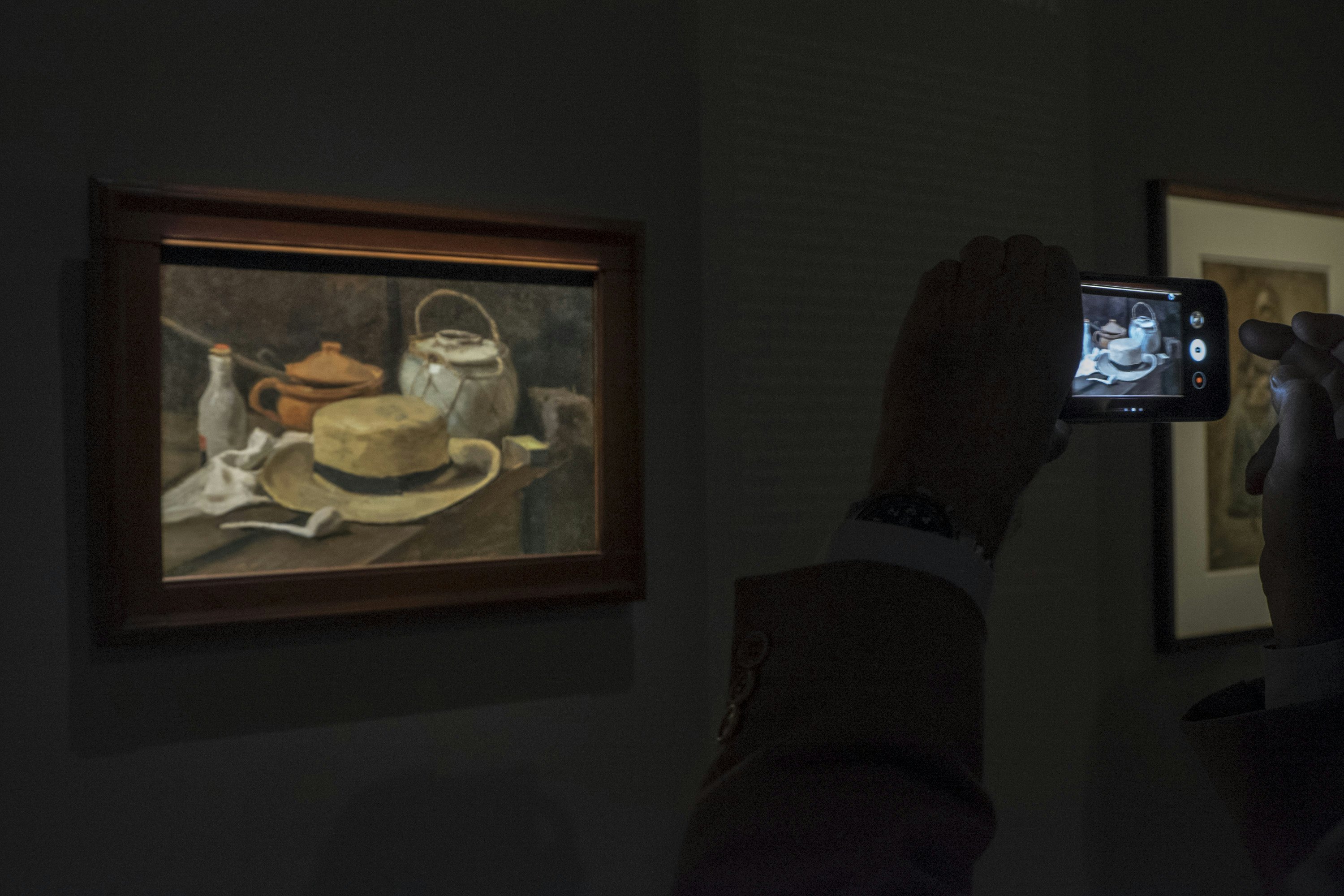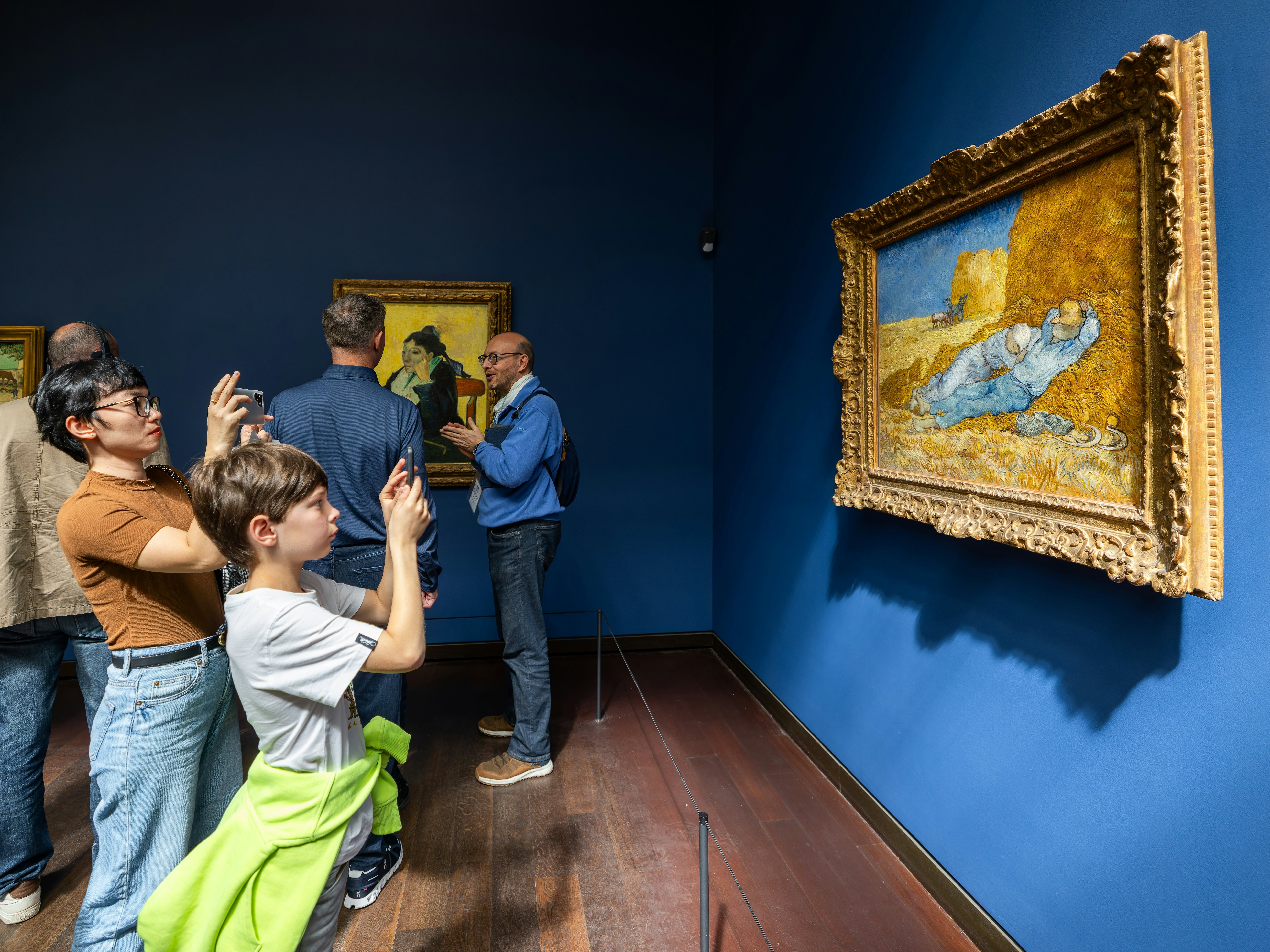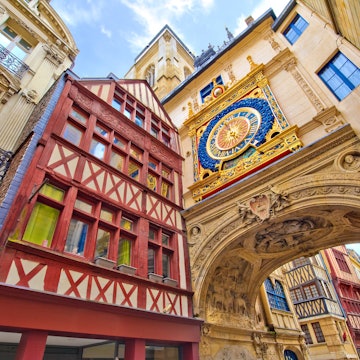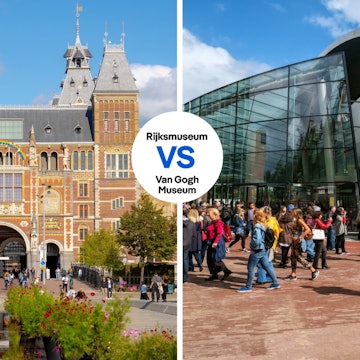

Museums such as Paris’ Musée d’Orsay have a wide range of works by Vincent van Gogh. Bumble Dee/Shutterstock
It’s hard to believe Vincent van Gogh was underappreciated during his lifetime.
The Post-Impressionist Dutch painter – renowned for his dramatic brushstrokes, expressive color usage and visceral connection to nature – died penniless and in obscurity. Yet today, his work is considered a high point of European art, and draws millions of visitors to museums and galleries around the world.
In January 2025, a Van Gogh exhibit at London’s National Gallery broke the museum’s attendance records, with 334,589 visitors. Over five million people worldwide have seen Van Gogh: The Immersive Experience since it started touring in 2017. And the artist’s legacy goes beyond galleries, too: he’s been immortalized in multiple films, including the Oscar-nominated At Eternity’s Gate (2018). You can buy Van Gogh–inspired fanny packs, puzzles and even skateboards online.
Fabulous as it is, the art isn’t the only thing stoking Van Gogh mania – for his tumultuous story is equally captivating. Van Gogh didn’t pick up a paintbrush until 27, and despite struggles with mental illness produced an astounding 2000-plus artworks within a single decade – until his tragic suicide in 1890. Most of his works went unsold during his lifetime, and he achieved fame only posthumously.
Today, his paintings hang in major museums across the globe. Self-portraits gaze at visitors in Basel and Detroit. He’s got a Night Cafe in New Haven, a windmill in Buenos Aires and Christian-themed work in the Vatican. His Sunflowers bloom in Tokyo, Munich and Philadelphia. Irises pop in Los Angeles; Roses bud in DC.
The best museum exhibitions reveal the man behind the masterpieces. Here are the permanent Van Gogh collections with stories to tell – plus exciting temporary shows worth seeing in 2025.

1. Van Gogh Museum, Amsterdam
You can immerse yourself in all things Van Gogh at this institution, which houses the largest collection of the artist’s work in the world. The Van Gogh Museum owns over 200 paintings, 500 drawings and nearly all Vincent’s letters – plus a collection devoted to art-world contemporaries like Paul Gauguin and Henri de Toulouse-Lautrec. You’ll also find rotating exhibits and accessible programming, including a tour where visually impaired visitors can feel 3D prints of the famous paintings.
The permanent exhibit narrates Van Gogh’s short but astounding career like a paint-splashed biography. It starts with unrefined sketches from his early art years, then moves to his first masterpiece, The Potato Eaters (1885), depicting the raw realities of peasant life in the Dutch countryside. You can sense his macabre humor in Skull of a Skeleton with Burning Cigarette (1886), which he created as a student in Antwerp, and see the influence of the Parisian Pointillists in his riotously colorful Self-Portrait with Grey Felt Hat (1887–88).
The canvases then follow Van Gogh’s move to Arles, where he lived in The Yellow House (1888) while painting Sunflowers (1889) – and on to his infamous post-ear-cutting recuperation in St-Rémy, where he depicted the Garden of the Asylum (1889) with ominous ochres and grays. Two of his final paintings provide a somber coda: Wheatfield with Crows (1890), with its forbidding birds, and Tree Roots, gnarled by plant life struggling to break free.
Top tip: While visiting the Dutch capital, don’t miss the encyclopedic Rijksmuseum, home of Van Gogh’s View of Amsterdam from Central Station (1885).

2. Kröller-Müller Museum, Otterlo
The world’s second-largest Van Gogh collection (with 91 paintings and 180 drawings) is just over two hours from Amsterdam by train, set within the 5500-hectare (13,590-acre) Hoge Veluwe National Park – a wild oasis that echoes the artist’s vivid landscapes.
Much like the Van Gogh Museum, the Kröller-Müller collection showcases Vincent’s artistic evolution from dark Dutch canvases to French flamboyance – but without the Amsterdam crowds. It’s all displayed in the Van Gogh Gallery, where roughly 40 pieces hang. Highlights include one of his oldest-known paintings (Still Life With Straw Hat, 1881) and one of his first experiments with the deep-indigo skies now synonymous with his work (Terrace of a Café at Night, 1888).
Tip your hat to trend-setting art collector and museum founder Helene Kröller-Müller (1869–1939) for the impressive assemblage. The German shipping heiress recognized Van Gogh’s talent long before the rest of the world caught on.
Top tip: Book a Podcatcher audio tour (available in eight languages) to hear stories about the paintings while moving through the museum at your leisure.

3. Musée d’Orsay, Paris
Chugging through this train station–turned–art depot is like attending a party with the world’s best Post-Impressionists. All the best artists are here – including Van Gogh, who takes pride of place in Rooms 36 and 37, both revamped in 2024 to offer visitors ample space to contemplate the works.
Seeing the Musée d’Orsay’s collection of 19th-century Parisian painters places visitors in Van Gogh’s shoes. After moving to Paris in 1886, he experienced an artistic awakening. Friendships with painters like Émile Bernard and Toulouse-Lautrec influenced his work, inspiring Van Gogh to experiment with the loose brushstrokes and light colors that were favorite techniques of French contemporaries.
After spending time with the inky La Nuit étoilée (or Starry Night Over the Rhône, 1888) and the absinthe-green Portrait de l’artiste (1889), check out Van Gogh’s other portraiture – including Le Docteur Paul Gachet (1890), depicting the physician and amateur printmaker who treated Van Gogh during his last weeks alive.
Top tip: If you enjoy Van Gogh’s portraits, head to the nearby Musée Rodin to see his playful, Japanese-inspired painting of friend Père (Julien) Tanguy, a Parisian art-shop owner.

4. National Gallery, London
Crowds at the sprawling National Gallery go ga-ga for Van Gogh’s dazzling gold Sunflowers (1888) in Room 41. Yellow light practically beams from the canvas, with each thick paint stroke making the canvas seem like a bouquet of luscious fresh-cut flowers.
What makes the painting even more fascinating is its backstory. During the summer Van Gogh painted Sunflowers, he invited fellow painter and friend Paul Gauguin to stay with him in Arles. But it turned out bunking together wasn’t the best idea: after two months, the artists got into an argument that ended with Gauguin fleeing to Paris, and Van Gogh slicing off his ear. It was the last time the two painters crossed paths in real life.
Gauguin eventually wrote Van Gogh, requesting the precious sunflower painting. Van Gogh created a copy instead – but never sent it. The original Sunflowers now hangs in the National Gallery; the copy hangs in the Van Gogh Museum.
That’s not the only Gauguin–Van Gogh companion set split between museums, either. Van Gogh’s Chair (also 1888, owned by the National) depicts the artist’s simple peasant seat during the day. Gauguin’s Chair (painted the same year, now hanging in Amsterdam) depicts his friend’s polished wood throne at night. While the sitters might be gone, their contentious friendship remains frozen in paint.
Top tip: Lean into Van Gogh’s ear-y drama by dropping by London’s Courtauld Gallery to see Self-Portrait with Bandaged Ear (1889), showcasing his artistic strength even through his mental struggles.

5. Museum of Modern Art, New York City
There’s a reason roughly three million people visit MoMA each year to see The Starry Night (1889, in the 2 South gallery). Van Gogh’s celestial scene – arguably his most famous work – is hypnotic, radiating rings of light above a fairy-tale depiction of St-Rémy-de-Provence. There’s also something poetic about taking in Van Gogh’s depiction of darkness in the ”city that doesn’t sleep” – for, much like New Yorkers, Van Gogh was enthralled by the night. In 1888, he wrote to his brother Theo, “It often seems to me that the night is much more alive and richly colored than the day.”
Van Gogh painted this canvas from his bedroom in the St-Paul-de-Mausole asylum – where he spent a year seeking respite from his mental illness. Making art, it seemed, was a remedy for his symptoms, and he threw himself into work whenever possible.
While waiting your turn to glimpse the glittering stars, admire neighboring artworks, like Van Gogh’s floral portrait of Joseph Roulin, the bearded postal employee he befriended in Arles.
Top tip: Beat MoMA’s crowds at NYC’s Metropolitan Museum of Art, home to an exceptional collection of Van Goghs you won’t have to fight mobs to see, including a sunny portrait of Roulin’s baby (1888, gallery 955) and the blustery Wheat Field with Cypresses (1889, Gallery 822).

6. Art Institute of Chicago, Chicago
Chicago’s premier fine-arts fortress holds about a dozen Van Goghs, eight of which can be seen on display in Gallery 241. There’s The Bedroom (1889), one of three paintings he made of his sleeping quarters in Arles; and Madame Roulin Rocking the Cradle (1889), one of five lovingly maternal paintings he made of Augustine Roulin. The Drinkers (1890), a green-tinted commentary on aging and alcohol, is particularly gripping. On days when Van Gogh was too sick to leave the asylum, he’d copy the work of other artists – in the example here, a wood engraving by Honoré Daumier.
The collection here is made more dynamic by what surrounds it. The Pointillist technique employed in Georges Seurat’s A Sunday on La Grande Jatte (1884, Gallery 240) contextualizes the tiny dots of color in Van Gogh’s Self-Portrait (1887), just as the treatment of water in Paul Signac’s Les Andelys, Côte d’Aval (1886, Gallery 240) ripples into Van Gogh’s Fishing in Spring, the Pont de Clichy (Asnières) (1887).
Top tip: The Roulin family shows up repeatedly in Van Gogh’s work – and also in the must-see biopic Loving Vincent (2017), an animated film following Armand Roulin (son of Joseph and Augustine) as he tries reconstructing the final weeks of Van Gogh’s life.

Temporary Van Gogh Exhibits in 2025
Of all the museums showcasing temporary Van Gogh deep-dives in 2025, two stand out as travel-worthy. Boston’s Museum of Fine Arts will feature roughly 20 works in Van Gogh: The Roulin Family Portraits (March 30–September 7), including the museum’s beloved Postman Joseph Roulin (1888). The exhibition, which examines Van Gogh’s intimate relationship with the Roulins, will move to the Van Gogh Museum from October 3, 2025–January 11, 2026.
In Japan, the touring show Van Gogh’s Home traces the artist’s career, focusing on 30-plus pieces from the Van Gogh family collection. The exhibition will appear in Osaka (July 5–August 31), Tokyo (September 12–December 21) and Nagoya (January 3–March 23, 2026).
Top tip: If you want to be enveloped by digital images of the Dutchman’s work, Van Gogh: The Immersive Experience is still touring in the US and Europe. Yet nothing compares to seeing the painter’s brushstrokes up close, in real life.














